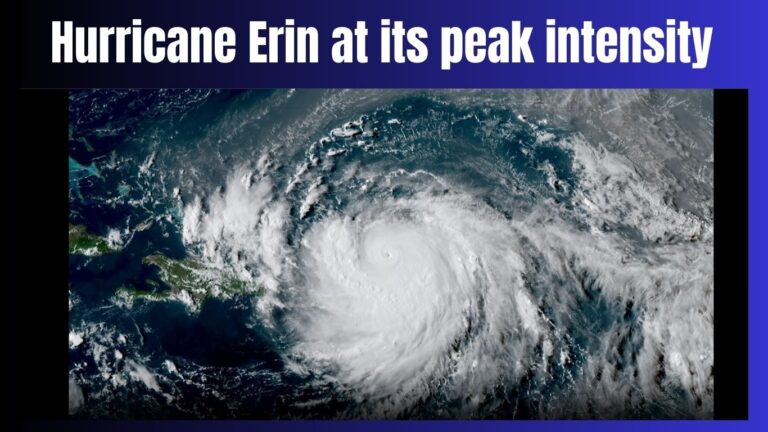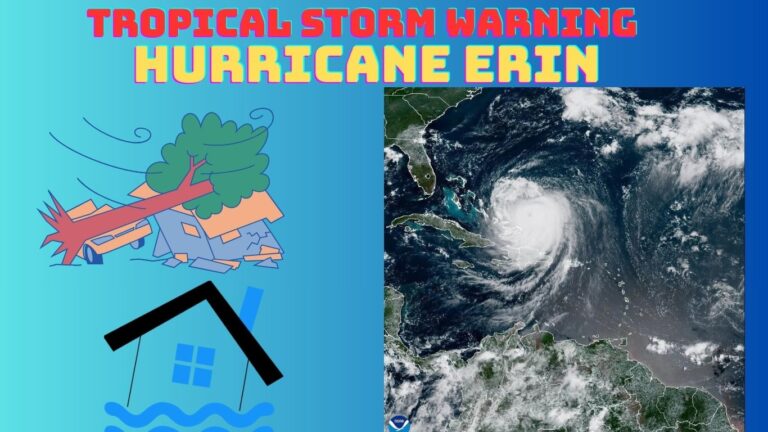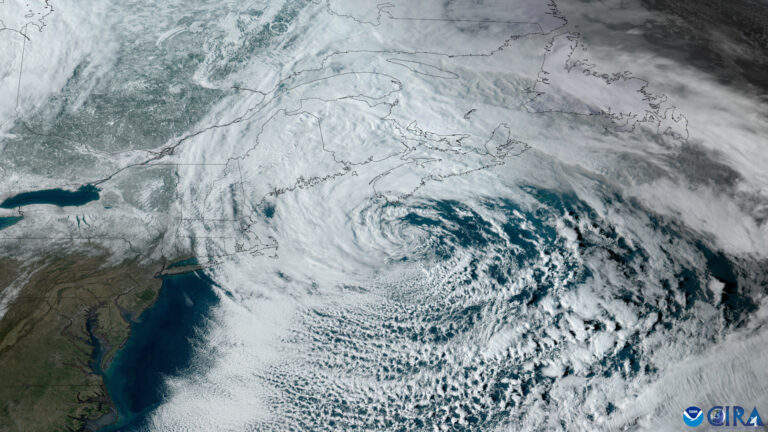Tropical Storm Erin: Latest Track & Forecast
- Understanding Hurricane Erin's Emergence in 2025
- The Current Status and Forecast: Where is Hurricane Erin?
- The Role of Spaghetti Models and the Cone of Uncertainty
- Saffir-Simpson Scale: Understanding Hurricane Intensity
- Essential Preparedness: A Step-by-Step Guide
- Debunking Common Hurricane Myths
- Historical Context: The Legacy of Hurricane Erin
- Conclusion
- You Can Read More Such Articles :
The Atlantic hurricane season of 2025 is proving to be a highly active one, and at its forefront is Hurricane Erin. As the fifth named storm of the season, Erin has captured the attention of meteorologists and coastal residents alike. Its unpredictable path and potential for rapid intensification make it a system that demands close, continuous monitoring. This comprehensive guide will provide you with a detailed, authoritative look at its current status, forecast, and essential preparedness information, all while grounding the data in clear, humanized language.
Understanding Hurricane Erin’s Emergence in 2025
Hurricane season officially runs from June 1 to November 30. This year, warmer-than-average sea surface temperatures and favorable atmospheric conditions in the Atlantic have fueled several strong systems. Hurricane Erin has emerged from a tropical wave, initially designated Invest 97L, which has been closely watched by the National Hurricane Center (NHC). Unlike a weaker tropical depression, a hurricane is a well-organized system with sustained winds of at least 74 mph. Erin’s development fits a trend of more intense storms, and its current trajectory highlights the importance of staying informed.
The Current Status and Forecast: Where is Hurricane Erin?
As of the latest advisory, Hurricane Erin is located in the western Atlantic Ocean, moving northwest. Its sustained winds are nearing hurricane strength, and meteorologists have indicated a high probability of further intensification. According to the NHC, conditions are favorable for Erin to strengthen into a Category 2 hurricane within the next 48 hours.
The National Hurricane Center has issued alerts for potential tropical storm and hurricane conditions in certain coastal zones. The key distinction to remember is between a hurricane watch and a hurricane warning. A watch means hurricane conditions are possible within a specified area, typically within 48 hours. A warning, on the other hand, means hurricane conditions are expected, and you should take immediate action to protect yourself, your family, and your property.
The Role of Spaghetti Models and the Cone of Uncertainty
When tracking a storm like Hurricane Erin, you’ll see maps with multiple lines, often called spaghetti models. These aren’t just random lines; they represent the output from different computer forecast models. Each line, or “ensemble member,” is a prediction of the storm’s path based on varying initial conditions. The cluster of these lines forms the cone of uncertainty, which shows the probable track of the storm’s center over the next five days. A narrow cone suggests high confidence in the forecast, while a wide one indicates more uncertainty. For Erin, the consensus of these models suggests it could approach the southeastern U.S. coast or turn north, a path that would threaten Bermuda.
Saffir-Simpson Scale: Understanding Hurricane Intensity
The intensity of Hurricane Erin is measured using the Saffir-Simpson Hurricane Wind Scale, which ranks storms from Category 1 to 5 based on their sustained wind speeds.
- Category 1 (74-95 mph): Very dangerous winds will produce some damage. Expect damage to roofs, gutters, and siding, with extensive power outages.
- Category 2 (96-110 mph): Extremely dangerous winds will cause extensive damage. Well-constructed homes could sustain major roof and siding damage, with near-total power loss for days to weeks.
- Category 3 (111-129 mph): Devastating damage will occur. This is the first category of a major hurricane. Well-built framed homes may suffer major damage or have roof decking removed.
- Category 4 (130-156 mph): Catastrophic damage will occur. Most of the roof structure and some exterior walls may be lost. The area could be uninhabitable for weeks or months.
- Category 5 (157 mph or higher): Catastrophic damage. A high percentage of homes will be destroyed, with power outages lasting for weeks or months.
Essential Preparedness: A Step-by-Step Guide
Preparation is your best defense against a hurricane. The American Red Cross and NOAA recommend a three-phase approach to safety.
Phase 1: Before the Storm (Pre-Alert)
- Create a Hurricane Plan: Decide where you will go if an evacuation order is issued. Know your local evacuation routes and have a designated meeting spot.
- Build a Kit: Your emergency kit should have at least three days’ worth of non-perishable food and water, medications, flashlights, batteries, a first-aid kit, and important documents.
- Secure Your Home: Trim or remove trees that could fall on your home. Protect windows with storm shutters or plywood. Clear your yard of any loose items that could become airborne projectiles.
Phase 2: During the Storm (Warning Issued)
- Stay Indoors: Once winds reach tropical-storm force, stay inside. Even in the eye of the storm, conditions can quickly turn dangerous.
- Find a Safe Room: Move to an interior room, closet, or hallway on the lowest floor. Stay away from windows and glass doors.
- Monitor Alerts: Keep a battery-powered or hand-crank radio tuned to the National Weather Service or a local news channel for official updates.
Phase 3: After the Storm (Post-Storm)
- Assess the Damage Safely: Do not enter your home until authorities say it is safe. Watch for downed power lines and gas leaks.
- Document Everything: Use your phone to take photos and videos of any damage for insurance claims.
- Clean Up Cautiously: Wear protective gear and be aware that floodwaters can contain dangerous contaminants.
Debunking Common Hurricane Myths
Misinformation can be just as dangerous as the storm itself.
- Myth: Taping a large “X” on your windows prevents them from shattering.
- Fact: Tape does nothing to prevent windows from breaking from wind or debris. It can actually create larger, more dangerous shards of glass. Use storm shutters or plywood instead.
- Myth: Opening windows during a hurricane will equalize pressure in your home.
- Fact: This is a dangerous myth. Opening windows lets wind inside, which can create pressure that rips your roof off. Keep all windows and doors shut and secured.
- Myth: The biggest danger is the wind.
- Fact: The deadliest part of a hurricane is the water—both from storm surge and inland flooding. Nearly 9 out of 10 storm-related deaths are due to water.
Historical Context: The Legacy of Hurricane Erin
The name “Erin” is not new to the Atlantic. A powerful Hurricane Erin in 1995 made two separate landfalls in Florida. Another Hurricane Erin in 2001 was a powerful Category 3 storm that narrowly missed Bermuda, causing minor damage but generating massive swells along the U.S. East Coast. These historical precedents serve as a vital reminder that every storm is unique and should be taken seriously.
Conclusion
As we continue to track Hurricane Erin in 2025, the message is clear: stay prepared and stay informed. By relying on official sources like the National Hurricane Center, understanding the Saffir-Simpson Scale, and creating a robust safety plan, you can protect yourself and your family. Whether Erin makes landfall or veers out to sea, its presence reinforces the unpredictable power of nature and the importance of vigilance throughout hurricane season.
You Can Read More Such Articles :
Hurricane Gil 2025 , Fantastic Four Box Office , Hurricane Gil , Labubu Big Into Energy Secret , Dale Gribble , King Of The Hill Dale , Lake Piru California , Global Citizen Fest Tickets , NBA Summer League Las Vegas Tickets , Quotes for Snowfall 2025 , Farmers Almanac Winter Forecast for 2025–2026 , Hurricane Erin 2025 Tracker , Milwaukee Flooding , Times Square Shooting , Fortnite New Season Tropical Storm Hurricane Erin , 2025 Lego Batman Batmobile







9 thoughts on “Hurricane Erin 2025 Tracker: Latest Updates & Alerts”